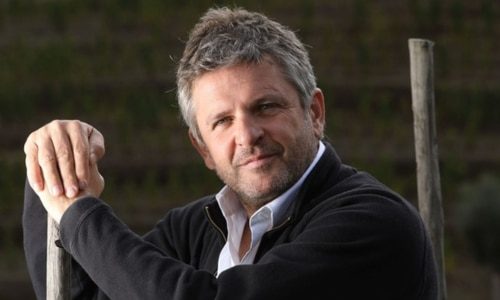
Alvaro Palacios
If anyone embodies the promise and spirit of “The New Spain,” it is Álvaro Palacios. His L’Ermita is widely considered—along with Peter Sisseck’s Pingus—to be the most important new Spanish wine of the modern era.
One of nine children born to the owners of Rioja’s respected Palacios Remondo, Álvaro studied enology in Bordeaux, while working under Jean-Pierre Moueix at Chateau Pétrus. He credits his tenure at Pétrus for much of his winemaking philosophy and for showing him “the importance of great wines.”
Álvaro could have returned to the security of his family’s domaine. But instead, he was drawn to remote and seductive Priorat, 60 miles from Barcelona, which had been one of Spain’s important pre-Phylloxera wine regions. Beginning in the 12th Century, Carthusian monks had painstakingly terraced and cultivated this rugged landscape, and Álvaro believed that their ancient wisdom could be tapped to yield wines with the stature of Pétrus and Grange.
Álvaro acquired his first vineyard, Finca Dofí, in 1990. Then, in 1993, he located what is now regarded as the appellation’s crown jewel property—a precipitous, northeast-facing vineyard on well-drained schist that had been planted between 1900 and 1940. Álvaro named it L’Ermita, for a small chapel, or hermitage, that sits atop the hill.
In 1995, the flow of critical praise for Álvaro’s L’Ermita began, and it hasn’t stopped. Over 30+ years, Álvaro has come to know this land as well as any native. Where his early wines were certainly influenced by his time in France, every subsequent vintage has been made with the goal of giving voice to this very real, Spanish terroir. Viticulture was exacting from the beginning, eschewing chemical fertilizers, herbicides, and pesticides, and employing mules to work the steep, terraced sites.

est 2005
© 2025 Vino Veritas, All Rights Reserved





